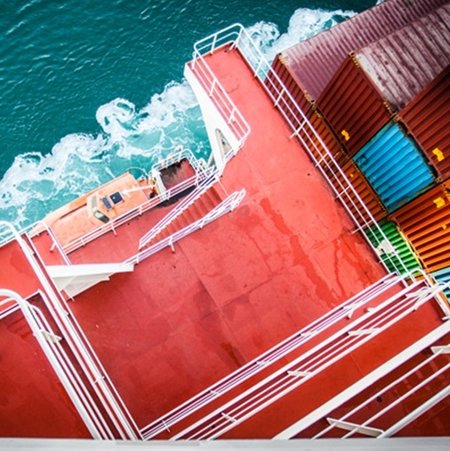Policy Brief: Managing Global Supply Chain Risks Post COVID-19
Key issues
- Australian traders experienced a blow as a result of authorities’ efforts to control the spread of Covid-19
– They experienced disruption in their supply chain, such as:
-
- Suppliers shutting down operations, at least temporarily
-
Deliveries constrained due to transport and border restrictions
- Buyers withholding purchases.
- With the Australian and global economy powering along as late as December 2019, many would have dismissed the risks associated with a global pandemic (or escalating trade war)- Such risks might have been regarded as a ‘known unknown’ (i.e. was aware of it, but not the size of its impact), or an ‘unknown known’ (i.e. was aware of it, but disregarded it)
-
- Many businesses were therefore unprepared for Covid-19
-
Interestingly, many were also able to adjust relatively quickly.
- But the current reality has now altered perspectives, with many firms now reassessing their risks and intending to revisit their supply chain strategies- A recent survey by Procurious (a global online network of procurement and supply chain professionals with over 40,000 members) found that 73% of respondents intend to make large-scale changes to their supply chains
-
- 34% intends to shift from foreign to local suppliers
-
21% plans to increase inventory levels.
- A firm’s response to potential reconfiguration of their supply chain will depend on the nature of the firm (including its size), its supply chain strategy, and where it is at in the supply chain evolution- An optimal position will be a balance between cost effectiveness and security, and a balance between control and cooperation among partners
-
- These could be achieved without sacrificing agility and responsiveness
-
It will require transparency of information (including on performance measures) between parties in the supply chain, and real partnership and integration for better coordinated response.
- It is important to acknowledge that for certain enterprises pursuing a significant change in supply chains may be near impossible- They highlight the lack of competition among suppliers, including in terms of reliability of quantity and quality, as well as value for money
– A further complicating factor may be that their supplier also happens to be in the same market/country as their customers
-
- That geographic proximity is a crucial part of their strategy.
So what, if any, changes could be made?
At the firm level, there are a number of measures worth investigating, but will require innovative thinking and flexibility. These include:
- Blending supply chain strategies to find a compromise between cost efficiency and resilience (such as allowing for increased inventory). This may be influenced by a recalculation of risk weightings and redefining of product life cycle.
- Building better systems for information flow, disruption alert warnings and coordinated response to disruptions.
- Exploring alternative inputs or ingredients if there is no alternative to current supplier(s). This is a longer-term solution, and may potentially require increased R&D investment.
- Revisiting the value of investments in vertical integration, which can strengthen supply chains, including investing in infrastructure such as warehousing in third countries.
How can government assist?
While supply chain decisions are made by private enterprises, government can assist by creating the conditions that facilitate change by firms
On the domestic front, government initiatives might include:
- Investing in facilities that reduce transport and storage costs
- Extending funding assistance to SME traders (specifically for supply chain related activities)
- Increasing assistance for relevant R&D, including in production and logistics technologies
At the international level, government could:
- Ensure relevant aspects of current and future trade agreements (including on standards and conformance, rules of origin, investment and services) support the transformation of supply chains
- Increase international development assistance or ‘aid for trade’ to partner countries to undertake reforms, including as part of implementation of trade agreements
- With its counterparts in key partner countries, convene strategic dialogue between private sector organisations and relevant government agencies, as a contributing step towards collaboration and partnership.
Background
Supply chain is a global network and the cumulative efforts of bringing a product (or service) to market. The entities in the supply chain include suppliers, producers or manufacturers, transporters, distributors, storage or warehouse providers, and customers. What is involved is the forward and reverse flow of goods and services, of cash and of information.
Supply chain strategies include:
- stable supply chain strategy, when a firm is just focussed on reliability, without need for real-time performance
- efficient reactive strategy, an operation in which production meets customer demand on an immediate basis (e.g. just-in-time)
A firm’s supply chain management can be at different stages of development:
- The spectrum can go from a supply chain that has no shared goals, weak relationships and lack of coordinated flows of information
- At the other end of the spectrum is a supply chain management where all businesses and supply chain elements are integrated, there is complete sharing and efficient flow of information, and holistic planning and coordinated approach.
Made famous by Donald Rumsfeld in 2002, the ‘knowns’ and ‘unknown’ risks were derived from the Johari Window psychological concept by Joseph Luft and Henry Ingham in 1955. The four risk categories are:
(i) Known known – risks we know and aware of their scale of impact;
(ii) Known unknowns – risks that we know, but not their scale of impact;
(iii) Unknown unknowns – risks the business do not know about and not their level of impact;
(iv) Unknown knowns – these are rare risks that organisation is aware of but ignores.
Businesses must consider all risks and have systems to monitor and manage them. Supply chain risks are complex, and the field of supply chain risk management has been increasing in importance due to previous economic and financial crises.
This is an ECA Edge Policy Brief. To read all of our Poicy Briefs, head to our main page here.

